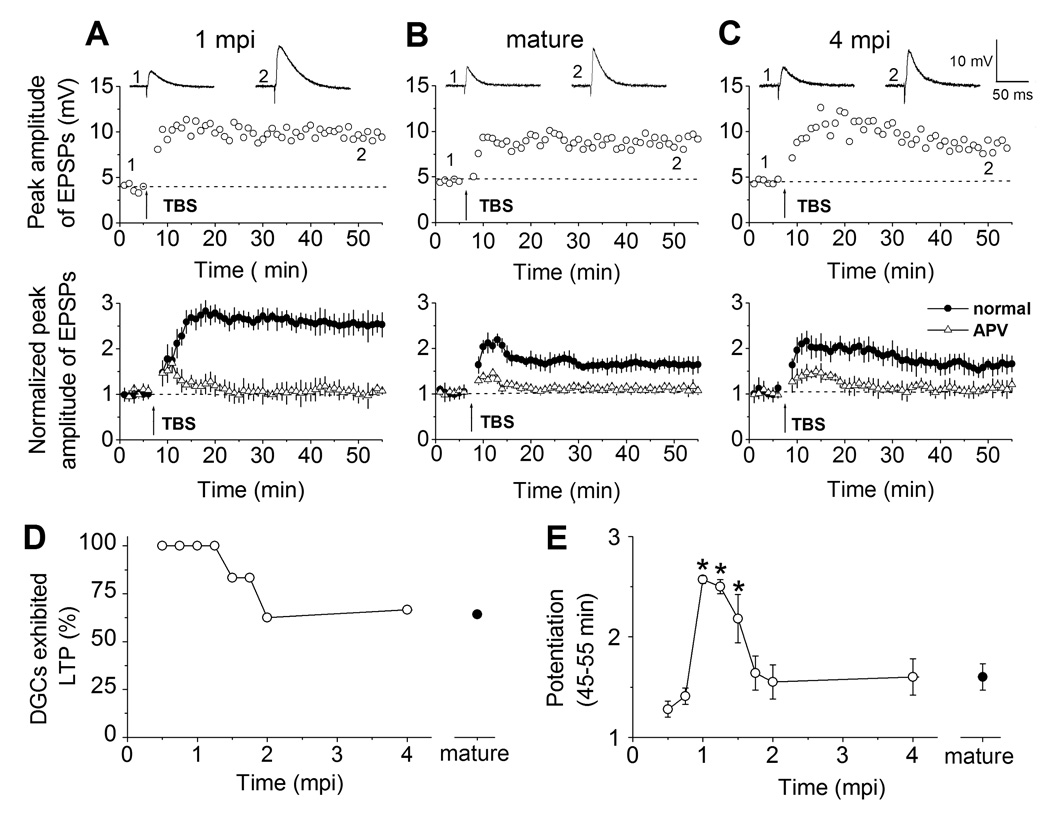Figure 1.

Adult-born neurons exhibit enhanced synaptic plasticity within a critical period. (A) LTP recorded from newborn DGCs at 1 mpi in the adult brain. Shown in the top row is an example of LTP of EPSPs recorded under the whole-cell current-clamp. Representative EPSPs averaged from 5 consecutive stimuli were taken before and after LTP induction by a physiological relevant TBS (arrow) at the time points (1 and 2) indicated in the graph. Shown at the bottom is the summary of LTP recorded from newborn DGCs at 1 mpi in the presence or absence of APV (50 µM). Normalized EPSP amplitudes are shown. Values represent mean ± SEM. (B, C) LTP recorded from mature DGCs and from newborn DGCs at 4 mpi. Same as in (A), except that GFP− mature DGCs (B) or newborn GFP+ DGCs at 4 mpi (C) were recorded. (D, E) A critical period with enhanced synaptic plasticity for adult-born neurons. Shown in (D) are percentages of DGCs at different stages of neuronal maturation that exhibited significant LTP. Shown in (E) is the summary of the mean enhancement of EPSPs (at 45–55 min during recording) from newborn GFP+ DGCs at different stages and from GFP− mature DGCs. Values represent mean ± SEM (*: p < 0.01; t-test). The value of LTP for individual cell examined under each condition is shown in Figure S3 in the Supplementary Data.
